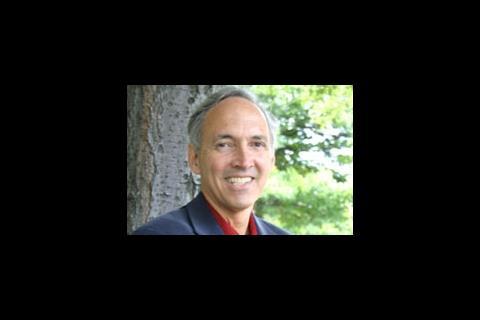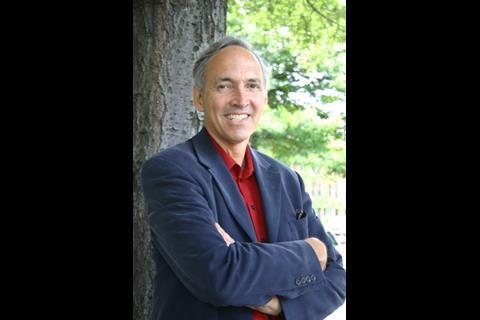Jerry Yudelson does his best to explain the changes proposed to the de facto national US green standard for all buildings
Sometime early next year, there will be an entirely new LEED system in place, according to moves last month by the US Green ��ɫ����TV Council (USGBC) board of directors. The long-awaited LEED 2009 version is out for public comment; it deals with the four major rating systems currently in widespread commercial use: LEED for New Construction (and Major Renovations), LEED-NC; LEED for Core and Shell, LEED-CS; LEED for Commercial Interiors, LEED-CI; and LEED for Existing ��ɫ����TVs (Operation and Maintenance), LEED-EB.
Over the past eight years, since its introduction in the spring of 2000, LEED has become the de facto national US standard for commercial, institutional and high-rise residential buildings, with more than 10,000 projects currently pursuing certification. The last major update of LEED-NC was at the end of 2005, and LEED-CI and LEED-CS have been in their current form for more than two years. LEED-EB was just updated this spring, but will have to endure another update next winter. So it goes. The very success of LEED has revealed some of its inadequacies as a national rating system for all types of buildings, of all sizes, in all climate zones of a very large country. As a result, the proposed changes are needed, but will also require considerable re-tooling of a large consulting industry that has grown up around LEED certification.
For example, the USGBC has already certified more than 51,000 LEED Accredited Professionals and has trained more than 75,000 people via workshops in some aspect of the LEED system. That’s a lot of expertise devoted to the current system, but they’re all going to have to learn a new game within the next six months. The USGBC has tried to explain the changes, but I’m still a bit mystified, and I’m supposed to be an expert. After all, I’ve trained more than 3,000 people in the current system the past seven years.
New scale
So I’ll explain what I can figure out. To start with, each of the four major rating systems has had different numbers of credit points required for certification, but that will no longer be the case. Everything will be on a 100-point scale, so that 40 points (40 percent) will be required for certification at the basic level, 50 points for Silver, 60 points for Gold and 80 points for Platinum. That sounds easy, but there will also be 10 “bonus” points that allow for innovations and for meeting regionally specificenvironmental goals, such as water conservation in the desert Southwest.The LEED Steering Committee put considerable effort into smoothing out the patchwork quilt of LEED credits and interpretation rulings that has developed over the past eight years, sometimes putting different rating systems at odds with each other. The group refers to this process as “alignment and harmonization.” To quote from the memo sent by the committee, “The resultant prerequisite/credit structure is a consolidation, alignment and updating of all existing LEED Rating Systems into their “most effective common denominator”. Prerequisite and credit alignment across applicable rating systems now provides a pool ofprerequisites and credits for all LEED Rating Systems, and multiple versions of prerequisites and credits have been retained where needed to address different marketsituations. In this process, various credit “fixes” were introduced.” So we get a consistent scale of 100 points for every rating system.
Credit ratings
The next big change is in the weighting of the credits. What are the biggest changes? First of all energy-efficiency plays an even larger role, accounting for more than one-third of total points in the new system. Ironically, the threshold for energy efficiency has been reduced from 14 percent savings to 10 percent, against a new national standard, ASHRAE 90.1-2007. Additionally, a water efficiency prerequisite was added, requiring 20 percent savings vs. the current national standard (e.g., 6 liters per flush toilets). Indoor environmental quality (including indoor air quality) has a lower total percentage in LEED-NC (15 points/15 percent) vs. 23 percent before.The USGBC has tried to explain the changes, but I’m still a bit mystified, and I’m supposed to be an expert
A key issue was to incorporate the best available science on life-cycle assessment and to re-do the weightings that had grown up in the system since 1998. According to the committee, “LEED 2009 weights LEED credits according to a logical, transparent framework that incorporates the best available science. The explicit weightings represent the culmination of a ‘weightings exercise’ that utilized two existing tools (modified for use by USGBC) in conjunction with exhaustive research, policy guidance from the LEED Steering Committee, and a new tool developed to synthesize large quantities of relevant information.”
Regions
Regionalisation was a big issue as well. To take a few baby steps toward this goal, LEED 2009 will assign up to four “bonus” points to region-specific credits that will be created by the USGBC in consultation with its more than 75 local chapters. According to the LEED Steering Committee: “The ability to recognize regional environmental priorities in LEED has been a clearpriority of LEED users. In response to this market desire, the LEED Steering Committee created a structure that allows for regional bonus credits in LEED. As a first step, incentives will be provided through bonus points that will add value to those credits that are considered most important for defined regions. Project teams may select bonus points from a list of eligible credits based on the project’s location. Select credits from the available list will be eligible for bonus points in appropriate sub-regions.”According to USGBC CEO Rick Fedrizzi, “LEED 2009 resets the bar for green building leadership because the urgency of our mission has challenged the industry to move faster and reach further than ever before. LEED 2009, coupled with an expanded third-party certification program and significant enhancements to LEED Online make up a multi-faceted initiative that we refer to as LEED v3.”
Finally, to complete a move of USGBC away from being both the promulgator and evaluator of LEED certification, an as-yet-undefined program of independent third-party assessors (perhaps similar to that used by BREEAM in the UK) will be created under the aegis of the Green ��ɫ����TV Certification Institute, a new organization specifically charged now with administering the testing and accreditation of LEED Accredited Professionals.
Delay?
Stay tuned for more information as the next few months roll along. The challenge of having this fairly radical change in the current system fully in place by the beginning of 2009 is daunting, and I wouldn’t be surprised if it takes longer than expected. Nevertheless, plan on major positive changes in the LEED system to take place next year. What about the transition? Most of you know that the marketplace hates uncertainty. So, you’ll more than likely will be able to continue certification efforts under current versions of the rating system, for projects already underway, but you probably won’t be able to start new projects after the end of 2008 without using the new LEED system. So the likelihood of having two parallel systems in place and operating for thousands of projects for the next couple of years is quite high.Postscript
Jerry Yudelson is principal of Yudelson Associates, Tucson, Arizona, and can be reached via . He is the author of seven books on green buildings and green development, including the recently released Choosing Green: The Home Buyer’s Guide to Good Green Homes





























No comments yet